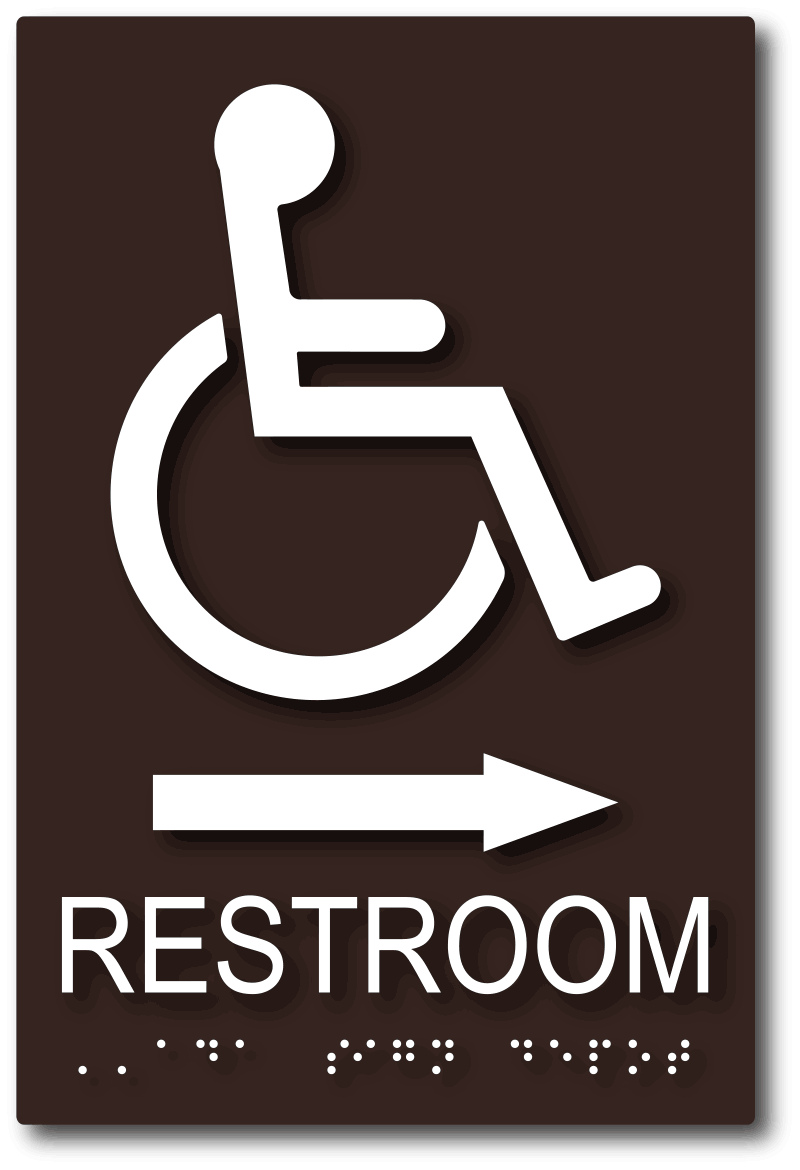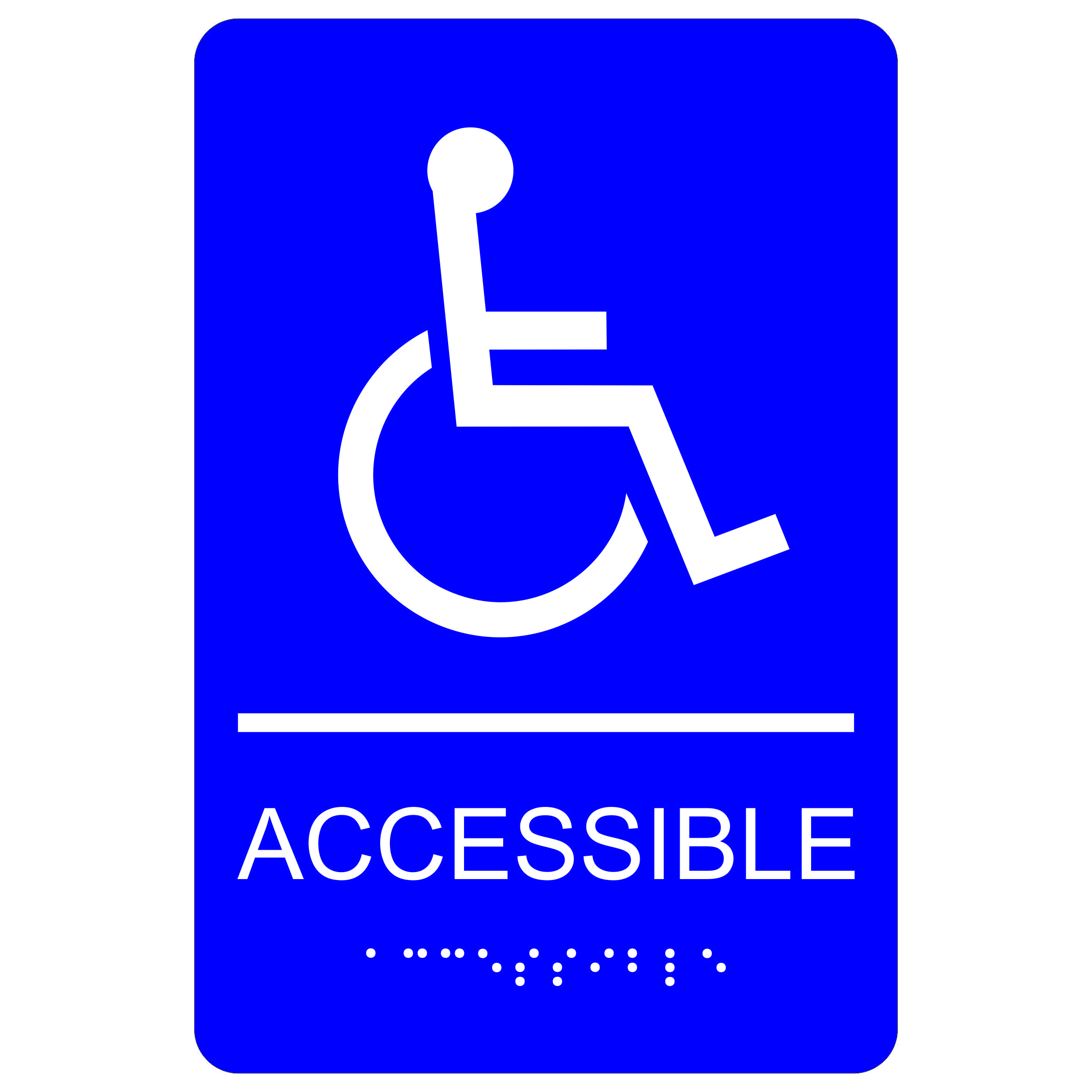Discovering the Trick Attributes of ADA Indicators for Improved Availability
In the world of ease of access, ADA indicators serve as quiet yet powerful allies, making sure that spaces are inclusive and accessible for people with impairments. By incorporating Braille and tactile aspects, these indicators break barriers for the aesthetically damaged, while high-contrast shade schemes and readable fonts cater to varied aesthetic needs.
Value of ADA Conformity
Guaranteeing conformity with the Americans with Disabilities Act (ADA) is vital for fostering inclusivity and equal gain access to in public rooms and workplaces. The ADA, passed in 1990, mandates that all public centers, companies, and transportation services fit people with handicaps, ensuring they delight in the exact same civil liberties and opportunities as others. Compliance with ADA requirements not just satisfies lawful commitments but likewise boosts an organization's online reputation by demonstrating its commitment to diversity and inclusivity.
Among the vital facets of ADA compliance is the application of obtainable signage. ADA signs are developed to make certain that people with disabilities can quickly navigate through areas and structures. These signs have to stick to specific guidelines concerning size, font, shade comparison, and positioning to ensure exposure and readability for all. Correctly executed ADA signage helps remove obstacles that individuals with specials needs commonly come across, consequently promoting their independence and confidence (ADA Signs).
Additionally, adhering to ADA policies can mitigate the threat of legal repercussions and potential penalties. Organizations that stop working to comply with ADA standards may encounter fines or suits, which can be both destructive and economically challenging to their public picture. Hence, ADA compliance is indispensable to promoting a fair atmosphere for every person.
Braille and Tactile Elements
The consolidation of Braille and responsive components right into ADA signage embodies the principles of availability and inclusivity. It is typically placed below the matching message on signs to make certain that people can access the details without visual assistance.
Tactile elements extend past Braille and consist of elevated personalities and signs. These elements are developed to be discernible by touch, allowing people to recognize space numbers, bathrooms, departures, and other vital areas. The ADA sets specific standards pertaining to the dimension, spacing, and placement of these tactile elements to maximize readability and make sure consistency across different environments.

High-Contrast Color Pattern
High-contrast color schemes play an essential function in boosting the exposure and readability of ADA signage for people with visual problems. These plans are important as they take full advantage of the difference in light reflectance in between text and history, making certain that indications are easily noticeable, even from a range. The Americans with Disabilities Act (ADA) mandates making use of certain color contrasts to fit those with limited vision, making it a vital aspect of conformity.
The efficacy of high-contrast shades exists in their capability to attract attention in different lights conditions, including poorly lit environments and locations with glow. Usually, dark message on a light background or light message on a dark history is employed to accomplish optimum contrast. As an example, black message on a white or yellow background gives a stark visual distinction that aids in quick recognition and understanding.

Legible Fonts and Text Size
When thinking about the style of ADA signs, the selection of legible fonts and suitable message dimension can not be overemphasized. These components are crucial for guaranteeing that signs come to people with aesthetic disabilities. The Americans with Disabilities Act (ADA) mandates that typefaces have to be not italic and sans-serif, oblique, manuscript, very attractive, or of why not look here unusual kind. These navigate here needs help ensure that the text is quickly understandable from a distance and that the characters are distinguishable to diverse target markets.
The size of the message likewise plays a pivotal function in ease of access. According to ADA guidelines, the minimum message elevation ought to be 5/8 inch, and it ought to increase proportionally with watching range. This is especially important in public rooms where signage requirements to be read promptly and precisely. Consistency in message size adds to a natural visual experience, assisting individuals in browsing atmospheres efficiently.
Furthermore, spacing in between letters and lines is indispensable to legibility. Ample spacing avoids personalities from appearing crowded, boosting readability. By adhering to these requirements, developers can substantially improve availability, ensuring that signage offers its intended function for all people, regardless of their aesthetic capacities.
Effective Positioning Approaches
Strategic positioning of ADA signage is vital for maximizing accessibility and guaranteeing compliance with lawful criteria. ADA standards specify that indications must be installed at a height in between 48 to 60 inches from the ground to guarantee they are within the line of view for both standing and seated individuals.
Additionally, signs must be positioned beside the lock side of doors to permit simple recognition prior to entrance. This positioning assists individuals find spaces and areas without blockage. In instances where there is no door, indications ought to be located on the closest adjacent wall. Uniformity in sign positioning throughout a center boosts predictability, lowering complication and boosting total individual experience.

Verdict
ADA indications play a vital function in advertising ease of access by incorporating attributes that deal with the requirements of people with impairments. Including Braille and tactile our website aspects makes sure crucial details is accessible to the aesthetically damaged, while high-contrast color design and legible sans-serif font styles improve presence across numerous lights conditions. Efficient positioning techniques, such as proper mounting heights and critical places, additionally facilitate navigation. These components collectively promote a comprehensive environment, highlighting the value of ADA conformity in guaranteeing equal accessibility for all.
In the world of ease of access, ADA indicators offer as quiet yet powerful allies, guaranteeing that rooms are comprehensive and navigable for individuals with impairments. The ADA, passed in 1990, mandates that all public facilities, companies, and transport services accommodate people with specials needs, ensuring they delight in the same civil liberties and chances as others. ADA Signs. ADA indications are designed to make certain that people with impairments can easily browse through spaces and structures. ADA guidelines stipulate that indicators ought to be placed at an elevation between 48 to 60 inches from the ground to guarantee they are within the line of sight for both standing and seated people.ADA indications play a vital duty in promoting ease of access by integrating attributes that attend to the needs of individuals with disabilities